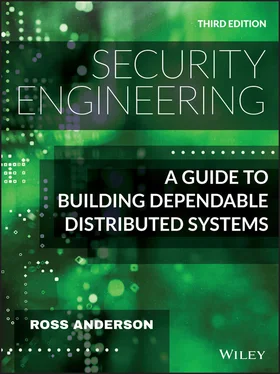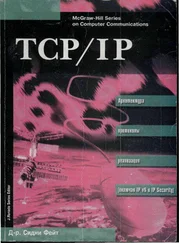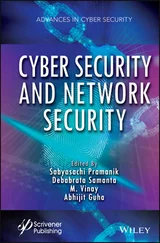Finally there are side channels . The most recent major innovation in attack technology targets CPU pipeline behaviour. In early 2018, two game-changing attacks pioneered the genre: Meltdown , which exploits side-channels created by out-of-order execution on Intel processors [1173], and Spectre , which exploits speculative execution on Intel, AMD and Arm processors [1070]. The basic idea is that large modern CPUs’ pipelines are so long and complex that they look ahead and anticipate the next dozen instructions, even if these are instructions that the current process wouldn't be allowed to execute (imagine the access check is two instructions in the future and the read operation it will forbid is two instructions after that). The path not taken can still load information into a cache and thus leak information in the form of delays. With some cunning, one process can arrange things to read the memory of another. I will discuss Spectre and Meltdown in more detail later in the chapter on side channels. Although mitigations have been published, further attacks of the same general kind keep on being discovered, and it may take several years and a new generation of processors before they are brought entirely under control. It all reminds me of a saying by Roger Needham, that optimisation consists of replacing something that works with something that almost works, but is cheaper. Modern CPUs are so heavily optimised that we're bound to see more variants on the Spectre theme. Such attacks limit the protection that can be offered not just by containers and VMs, but also by enclave mechanisms such as TrustZone and SGX. In particular, they may stop careful firms from entrusting high-value cryptographic keys to enclaves and prolong the service life of old-fashioned hardware cryptography.
6.4.3 User interface failures
A common way to attack a fortress is to trick the guards into helping you, and operating systems are no exception. One of the earliest attacks was the Trojan Horse , a program the administrator is invited to run but which contains a nasty surprise. People would write games that checked whether the player was the system administrator, and if so would create another administrator account with a known password. A variant was to write a program with the same name as a common system utility, such as the lscommand which lists all the files in a Unix directory, and design it to abuse the administrator privilege (if any) before invoking the genuine utility. You then complain to the administrator that something's wrong with the directory. When they enter the directory and type lsto see what's there, the damage is done. This is an example of the confused deputy problem: if A does some task on behalf of B, and its authority comes from both A and B, and A's authority exceeds B, things can go wrong. The fix in this particular case was simple: an administrator's ‘PATH’ variable (the list of directories to be searched for a suitably-named program when a command is invoked) should not contain ‘.’ (the symbol for the current directory). Modern Unix versions ship with this as a default. But it's still an example of how you have to get lots of little details right for access control to be robust, and these details aren't always obvious in advance.
Perhaps the most serious example of user interface failure, in terms of the number of systems historically attacked, consists of two facts: first, Windows is forever popping up confirmation dialogues, which trained people to click boxes away to get their work done; and second, that until 2006 a user needed to be the administrator to install anything. The idea was that restricting software installation to admins enabled Microsoft's big corporate customers, such as banks and government departments, to lock down their systems so that staff couldn't run games or other unauthorised software. But in most environments, ordinary people need to install software to get their work done. So hundreds of millions of people had administrator privileges who shouldn't have needed them, and installed malicious code when a website simply popped up a box telling them to do something. This was compounded by the many application developers who insisted that their code run as root, either out of laziness or because they wanted to collect data that they really shouldn't have had. Windows Vista started to move away from this, but a malware ecosystem is now well established in the PC world, and one is starting to take root in the Android ecosystem as businesses pressure people to install apps rather than using websites, and the apps demand access to all sorts of data and services that they really shouldn't have. We'll discuss this later in the chapter on phones.
Software security is not all doom and gloom; things got substantially better during the 2000s. At the turn of the century, 90% of vulnerabilties were buffer overflows; by the time the second edition of this book came out in 2008, it was just under half, and now it's even less. Several things made a difference.
1 The first consists of specific defences. Stack canaries are a random number inserted by the compiler next to the return address on the stack. If the stack is overwritten, then with high probability the canary will change [484]. Data execution prevention (DEP) marks all memory as either data or code, and prevents the former being executed; it appeared in 2003 with Windows XP. Address space layout randomisation (ASLR) arrived at the same time; by making the memory layout different in each instance of a system, it makes it harder for an attacker to predict target addresses. This is particularly important now that there are toolkits to do ROP attacks, which bypass DEP. Control flow integrity mechanisms involve analysing the possible control-flow graph at compile time and enforcing this at runtime by validating indirect control-flow transfers; this appeared in 2005 and was incorporated in various products over the following decade [351]. However the analysis is not precise, and block-oriented programming attacks are among the tricks that have evolved to exploit the gaps [966].
2 The second consists of better general-purpose tools. Static-analysis programs such as Coverity can find large numbers of potential software bugs and highlight ways in which code deviates from best practice; if used from the start of a project, they can make a big difference. (If added later, they can throw up thousands of alerts that are a pain to deal with.) The radical solution is to use a better language; my colleagues increasingly write systems code in Rust rather than in C or C++ 10.
3 The third is better training. In 2002, Microsoft announced a security initiative that involved every programmer being trained in how to write secure code. (The book they produced for this, ‘Writing Secure Code’ [929], is still worth a read.) Other companies followed suit.
4 The latest approach is DevSecOps, which I discuss in section 27.5.6. Agile development methodology is extended to allow very rapid deployment of patches and response to incidents; it may enable the effort put into design, coding and testing to be aimed at the most urgent problems.
Architecture matters; having clean interfaces that evolve in a controlled way, under the eagle eye of someone experienced who has a long-term stake in the security of the product, can make a huge difference. Programs should only have as much privilege as they need: the principle of least privilege [1642]. Software should also be designed so that the default configuration, and in general, the easiest way of doing something, should be safe. Sound architecture is critical in achieving safe defaults and using least privilege. However, many systems are shipped with dangerous defaults and messy code, exposing all sorts of interfaces to attacks like SQL injection that just shouldn't happen. These involve failures of incentives, personal and corporate, as well as inadequate education and the poor usability of security tools.
Читать дальше











